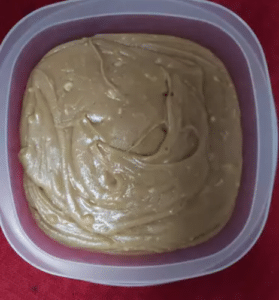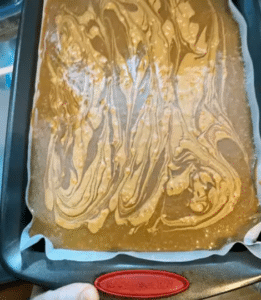
Introduction
Peanut butter and jelly (PB&J) sandwiches hold a special place in the hearts and stomachs of millions worldwide. This quintessential American snack has transcended generations, serving as a quick, delicious, and satisfying meal option. The simplicity of spreading creamy or crunchy peanut butter alongside sweet, fruity jelly between two slices of bread creates an unbeatable combination of flavors and textures. Whether enjoyed as a childhood favorite, a post-workout snack, or a gourmet creation, PB&J sandwiches remain a versatile food beloved by all.
In this article, we’ll explore the rich history of the PB&J sandwich, analyze its nutritional aspects, and uncover creative ways to prepare and enjoy this timeless classic. From cultural variations to its role in pop culture, the PB&J story is as satisfying as the sandwich itself.
Part 2: The History of PB&J
Origins of Peanut Butter
The journey of the peanut butter and jelly sandwich begins with peanut butter itself. Peanuts, originally cultivated in South America, were introduced to North America in the 18th century. By the late 19th century, peanut butter as we know it today was developed. Dr. John Harvey Kellogg, known for creating cornflakes, patented a process for making peanut butter in 1895. Initially, peanut butter was a health food consumed by the elite and was served in high-end restaurants.
As it became more affordable in the early 20th century, its popularity soared. Thanks to innovations in peanut farming and processing, the product became a household staple. Its creamy, protein-packed texture and long shelf life made it a perfect ingredient for countless recipes, including the PB&J sandwich.
The Creation of the PB&J Combination
While the exact origins of the PB&J sandwich are unclear, the combination gained prominence in the United States during the early 20th century. The first known mention of peanut butter paired with jelly in a sandwich appeared in a 1901 article in the Boston Cooking School Magazine, written by Julia Davis Chandler. She recommended spreading currant or crab apple jelly on bread along with peanut paste, paving the way for today’s PB&J.
During World War II, the sandwich’s popularity skyrocketed. Soldiers were provided with peanut butter, jelly, and bread in their rations due to their affordability and nutritional value. Upon returning home, soldiers brought the habit with them, cementing the PB&J sandwich as a go-to meal for American families.
Popularity Through Generations
By the 1950s, peanut butter and jelly sandwiches had become a staple of American childhood. They were inexpensive, easy to make, and universally loved. Advertising campaigns and recipe books celebrated PB&J as a wholesome snack, ideal for lunchboxes and quick meals.
Its appeal didn’t stop at children. Adults found PB&J sandwiches to be an excellent energy booster, and variations of the recipe began appearing in culinary circles. From being served with gourmet twists in restaurants to featuring in diet plans as a healthy snack, PB&J continued to evolve while retaining its core appeal.

Part 3: Ingredients Breakdown
Peanut Butter: Varieties and Health Benefits
Peanut butter is the heart of a PB&J sandwich, offering a rich, nutty flavor and creamy texture that contrasts perfectly with sweet jelly. However, not all peanut butter is created equal. Here’s a closer look at its varieties and health benefits:
- Types of Peanut Butter:
- Smooth : Ideal for those who love a creamy texture, smooth peanut butter spreads evenly and works well for traditional PB&J sandwiches.
- Crunchy : Packed with peanut bits, crunchy peanut butter adds a delightful texture that contrasts with the softness of the bread and jelly.
- Natural : Made without added sugars or hydrogenated oils, natural peanut butter is a healthier option for those mindful of their diet. For more health-conscious ideas, explore our Healthy Dessert Recipes.
- Flavored : Variants like honey-roasted or chocolate-infused peanut butter cater to those looking for an adventurous twist.
- Health Benefits: Peanut butter is a nutritional powerhouse. It’s rich in protein, healthy fats, and essential nutrients like vitamin E, magnesium, and potassium. These nutrients promote heart health, provide sustained energy, and support muscle growth. However, moderation is key, as some varieties contain added sugar and salt.
Jelly/Jam: Types and Nutritional Insights
Jelly or jam provides the sweetness and fruity flavor that balances the nutty richness of peanut butter. Here’s what you need to know about this indispensable ingredient:
- Common Types:
- Grape Jelly: The classic choice for PB&J, grape jelly’s smooth texture and sweet flavor make it a favorite among children and adults alike.
- Strawberry Jam: With bits of real fruit, strawberry jam adds a slightly tangy flavor and a textured spread.
- Raspberry Jam: Offering a tart twist, raspberry jam is perfect for those who prefer a more sophisticated flavor profile.
- Homemade Options: For those seeking a healthier alternative, homemade jams made with minimal sugar and fresh fruits are a fantastic choice.
- Nutritional Aspects: While jellies and jams are a source of natural fruit sugars, they can also contain added sugars and preservatives. Opting for low-sugar or fruit-only versions ensures you enjoy the flavor without compromising on health. Additionally, jams with real fruit pieces provide added fiber.
Bread Choices: White, Whole Grain, or Gluten-Free?
The bread serves as the foundation of the PB&J sandwich, holding the peanut butter and jelly together. Choosing the right bread can elevate your sandwich experience:
- White Bread: A traditional option, white bread is soft and airy, allowing the flavors of peanut butter and jelly to shine. However, it lacks the nutritional benefits of whole-grain alternatives.
- Whole Grain Bread: Packed with fiber, vitamins, and minerals, whole-grain bread is a healthier option that adds a nutty undertone and chewy texture to the sandwich.
- Gluten-Free Bread: For those with gluten sensitivities, gluten-free bread offers a safe alternative. Modern recipes ensure these breads are just as delicious and versatile.
- Specialty Breads: Artisan bread, sourdough, or brioche can bring a gourmet twist to your PB&J sandwich.
Each ingredient in a PB&J sandwich plays a crucial role in its flavor, texture, and nutritional value. Combining the right peanut butter, jelly, and bread allows for endless customization to suit individual preferences.
Part 4: How to Make a Perfect PB&J
Essential Tools and Ingredients
Crafting the perfect peanut butter and jelly (PB&J) sandwich may seem simple, but a few key tools and high-quality ingredients can make all the difference. Here’s what you’ll need:
- Tools:
- A butter knife for spreading the peanut butter and jelly evenly.
- A cutting board to keep your sandwich-making process neat.
- Optional: A sandwich cutter for creating fun shapes, especially for kids.
- Ingredients:
- Peanut Butter: Choose your preferred type, whether smooth, crunchy, or flavored.
- Jelly/Jam: Pick a jelly or jam that complements the peanut butter. Grape and strawberry are classic choices, but feel free to experiment.
- Bread: Soft white bread for a classic touch, or whole grain for a healthier option.
Step-by-Step Guide
Follow these simple steps to achieve PB&J perfection:
- Prepare Your Ingredients: Lay out all your ingredients and tools. If the peanut butter is thick or refrigerated, let it soften at room temperature for easier spreading.For more inspiration on creating sweet treats, check out our Cheesecake Fudge Recipe.
- Spread the Peanut Butter: Take one slice of bread and spread a generous layer of peanut butter. Cover the entire surface, ensuring an even layer to prevent the jelly from soaking into the bread.
- Add the Jelly: On the second slice of bread, spread a slightly thinner layer of jelly or jam. Again, aim for an even coating to balance the flavors.
- Combine the Slices: Place the peanut butter slice and the jelly slice together, ensuring the spreads face inward. Gently press the slices together.
- Optional Step – Cut and Shape: Use a knife to cut the sandwich diagonally, into squares, or use a shape cutter for added fun.
- Serve and Enjoy: Your PB&J sandwich is ready to be devoured. Pair it with milk or juice for a classic meal.
Tips for Customization
Elevate your PB&J sandwich by experimenting with these creative variations:
- Add Texture: Incorporate banana slices, apple slices, or even a handful of granola for added crunch and flavor.
- Sweeten It Up: Drizzle honey or sprinkle a pinch of cinnamon to enhance the sweetness.
- Go Gourmet: Try using almond butter or cashew butter for a refined twist. Pair with peculiar jams like fig, apricot, or blackberry.
- Protein Boost: Add chia seeds, flaxseeds, or a sprinkle of protein powder to the peanut butter layer for an energy-packed snack.
With this step-by-step guide and customization tips, you can master the art of making the perfect PB&J sandwich. Whether you stick to the classic recipe or explore creative variations, the possibilities are endless.
Part 5: Health Benefits and Concerns
Nutritional Profile of PB&J Sandwiches
A peanut butter and jelly (PB&J) sandwich is not only delicious but also provides essential nutrients, making it a balanced meal when prepared thoughtfully. Here’s an overview of its nutritional components:
- Proteins: Peanut butter is a significant source of protein, essential for muscle repair and growth. A standard PB&J can deliver 10–15 grams of protein, depending on the type and quantity of peanut butter used.
- Healthy Fats: The unsaturated fats in peanut butter promote heart health by lowering bad cholesterol levels. These fats also provide a steady energy source.
- Carbohydrates: The bread and jelly contribute carbohydrates, offering quick energy. Whole-grain bread provides additional fiber, which aids digestion.
- Vitamins and Minerals: Peanut butter contains magnesium, potassium, and vitamin E, while jelly can offer vitamin C from fruit content. Whole-grain bread adds B vitamins and iron to the mix.
Health Benefits of PB&J
- Energy Boost: Thanks to its balanced combination of carbohydrates, fats, and proteins, a PB&J sandwich is an excellent energy-boosting snack or meal.
- Portable and Convenient: Easy to prepare and pack, PB&J is ideal for busy schedules, outdoor activities, and school lunches.
- Rich in Fiber (When Using Whole-Grain Bread): Whole-grain bread contributes dietary fiber, supporting gut health and providing a feeling of fullness.
- Affordable Nutrition: PB&J sandwiches are budget-friendly while offering substantial nutritional value.
- Customizable for Dietary Needs: By selecting healthier bread, natural peanut butter, and sugar-free jelly, you can tailor the sandwich to fit specific health goals.
Concerns to Consider
While PB&J sandwiches are nutritious, there are some health concerns to keep in mind:
- High Calorie Count:
- A PB&J sandwich can contain 350–500 calories, depending on the portions and ingredients. For those monitoring calorie intake, consider using smaller portions or low-calorie alternatives like low-fat peanut butter.
- Added Sugars:
- Some peanut butter and jelly products are high in added sugars, contributing to excessive sugar intake. Opt for natural or unsweetened varieties to avoid this issue.
- Allergies:
- Peanut allergies are a serious concern for many individuals. Alternatives like almond butter, sunflower seed butter (SunButter), or tahini can provide safe and delicious substitutes.
- Sodium Levels:
- Processed peanut butter often contains added salt. Look for low-sodium or no-salt-added versions for a healthier choice.
Tips for Making a Healthier PB&J
- Choose Whole-Grain Bread: Opt for whole-grain or multi-grain bread instead of white bread for added fiber and nutrients.
- Use Natural Spreads: Select peanut butter and jelly without added sugars, preservatives, or hydrogenated oils.
- Limit Portions: Use measured servings of peanut butter and jelly to control calorie and sugar intake.
- Incorporate Fresh Fruit: Replace or supplement jelly with fresh fruit like banana or strawberry slices for natural sweetness and extra vitamins.
By understanding its nutritional profile and being mindful of potential health concerns, you can enjoy PB&J sandwiches as a wholesome and versatile part of your diet.
Part 6: PB&J Variations Across Cultures
Unique Twists in Different Countries
While peanut butter and jelly sandwiches are a quintessential American staple, the concept of combining spreads and bread has inspired variations across the globe. Different cultures have adapted the PB&J formula to suit their tastes and locally available ingredients.
- United Kingdom – Jam and Butter Sandwiches:
- In the UK, the concept of spreading jam on bread is popular, though it’s often paired with butter instead of peanut butter. This simpler variation highlights the sweet and creamy textures of the ingredients.
- Southeast Asia – Kaya Toast:
- Kaya, a coconut jam made with eggs and pandan leaves, is a beloved spread in countries like Singapore and Malaysia. Kaya toast, often served with butter, mirrors the sweet and savory balance of a PB&J.
- Australia – Vegemite and Jam:
- Australians are known for their love of Vegemite, a savory yeast-based spread. Some adventurous eaters pair it with jam, creating a combination that’s sweet, salty, and uniquely Australian.
- South Africa – Peanut Butter and Syrup:
- In South Africa, peanut butter is frequently combined with golden syrup or honey, offering a sugary twist on the traditional PB&J sandwich.
Gourmet PB&J Trends
As food trends evolve, the humble PB&J has found its way into gourmet kitchens. Here are some upscale twists on the classic sandwich:
- Artisan Bread: Swapping regular bread for sourdough, brioche, or baguette elevates the sandwich’s texture and flavor.
- Peculiar Spreads: Nut butters made from cashews, macadamias, or hazelnuts bring a luxurious touch. Similarly, jams like fig, apricot, or pomegranate offer a sophisticated twist.
- Grilled PB&J: Grilling the sandwich creates a warm, crispy crust and gooey filling, transforming it into a comforting treat.If you enjoy creative spins on classics, try our Ultimate Guide to Hamburger Patties.
- Savory Additions: Adding a sprinkle of sea salt, a drizzle of olive oil, or even a slice of sharp cheese creates an intriguing flavor profile.
- Dessert-Inspired Variants: Incorporating marshmallow fluff, chocolate spreads, or caramel transforms PB&J into a dessert-worthy indulgence.
The Universal Appeal of PB&J Variations
The beauty of PB&J lies in its adaptability. Across cultures, ingredients, and culinary preferences, the core idea of combining complementary spreads and bread remains universally appealing. From the traditional American recipe to global and gourmet interpretations, the possibilities are endless.
